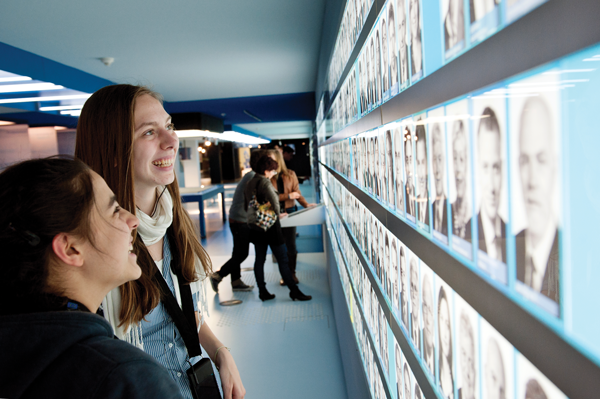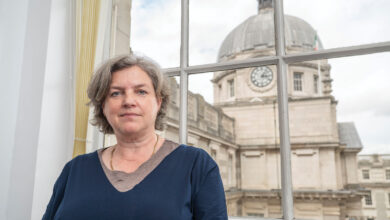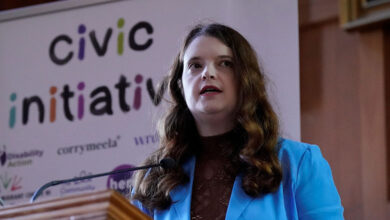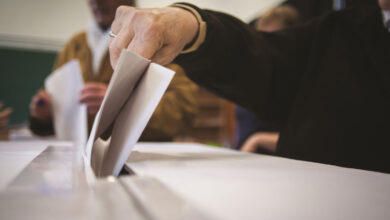European Parliament visitors’ centre
Peter Cheney visits the Parlamentarium, the European Parliament’s new visitors’ centre in Brussels.
To promote itself to an apathetic public, the European Parliament has opened its first visitors’ centre and coined a new word in the process: Parlamentarium. Four days before it opened its doors, I joined a group of Czech students for a tour.
You can’t miss the entrance, lit up like a Times Square sign, although its surroundings are grey and drab. As the tour gets under way, a darkened room shows grim scenes from the 1930s and 1940s, and then leads into a brighter timeline from 1950, when the first steps to integration were taken. Photos of historic events bring the years to life, including Belfast City Hall during the 1998 Agreement campaign. As a geography graduate, I liked the multitude of maps.
Teenagers can take part in an interactive role play, which teaches pupils how to form alliances, stand up for their ideas and make quick decisions. The audiovisuals are impressive and potential politicians will enjoy them.
A walk-on map of a borderless Europe (named ‘Ground of Stories’) tells how the Parliament has made a local difference. Overhead, a light installation called ‘Sky of Opinions’ highlights the results of various EU-wide surveys. Interviews with 54 members of the public are played in a ‘living room’ style area next door.
The Parliament prides itself on being the directly-elected part of the EU. That is only partly true.
Yes, all 736 seats are up for election but only 20 MEPs are directly chosen by voters i.e. in Northern Ireland, the Republic and Malta. The others are picked by their party and placed on a list. The voter has no say on whether the candidate is the right person to represent them. Vacancies are filled by party appointees, except in Malta where by-elections are allowed.
In other quirks, the Parliament will grow to 751 MEPs before the next election. New members will be appointed by parties without a public vote. Three MEPs do not represent Europe, coming instead from the French overseas territories. Turnout has fallen continuously from 62 per cent in 1979 to 43 per cent in 2009.
Eurosceptics criticise the centre’s cost and €21 million (up from an initial €18.6 million) is hard to justify in austere times. The same critics, though, claim that the Parliament is out-of-touch and ignored by voters. It is in the public’s interest to understand how politics works and the Parlamentarium does a pretty good job at explaining this. The centre also tries to give a full sweep of modern European history, which few national museums offer.
A united Europe also means more to those who were cut off by its worst division: the Iron Curtain. The Parliament’s President, Jerzy Buzek, was born in 1940 and grew up in Poland under communism. To him, the exhibition shows that Europe has “come a long way”.
Missing Marshall
One major omission is the Marshall Plan, America’s $13 billion bailout which stabilised western and southern Europe after World War Two. A single photo describes the event.
The Parlamentarium maintains thatnot everything can be included and a balance must be struck between 27 different countries. As ‘Rise to Globalism’ by Stephen Ambrose relates, the Marshall Plan revolved around Germany, Greece, elections and Italian politics. How history repeats itself.
Admission is free and opening times are available at www.europarl.europa.eu/parlamentarium






